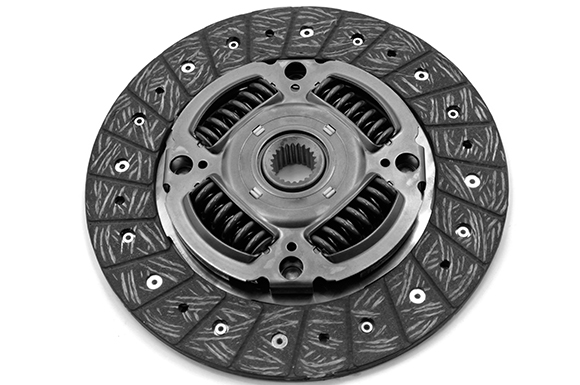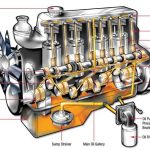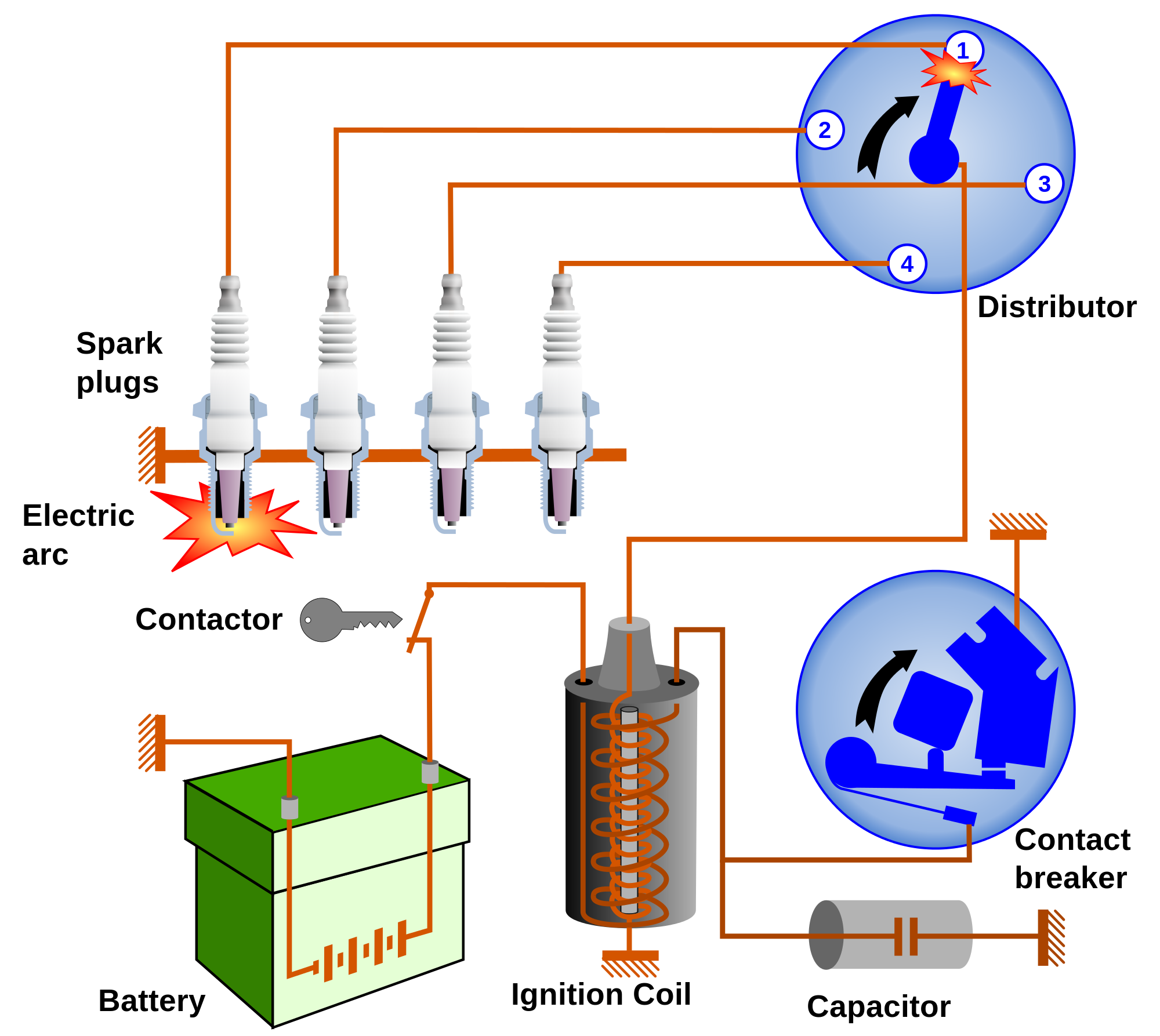How Brakes Work in the Car ?
The car’s braking system is one of the most important safety systems in the car. It is responsible for reducing the speed of the car or stopping it. The braking system consists of a set of brakes, which are applied to the wheels to stop their rotation.
Main components of the braking system:
- Pedals: Used by the driver to apply the brakes.
- Cylinders: They contain the pistons that press the brakes.
- Brakes: They consist of a disc or drum that is pressed by cylinders.
- Hydraulic fluid: transfers force from the pedals to the cylinders.
- Hydraulic lines: They transport hydraulic fluid from the master cylinder to the sub-cylinders.
- Brake Pressure Regulator: Controls hydraulic fluid pressure.
- ABS: Anti-lock braking system, which helps prevent skidding.
- EBD: Electronic Brake Force Distribution system, which helps distribute braking force evenly between the wheels.
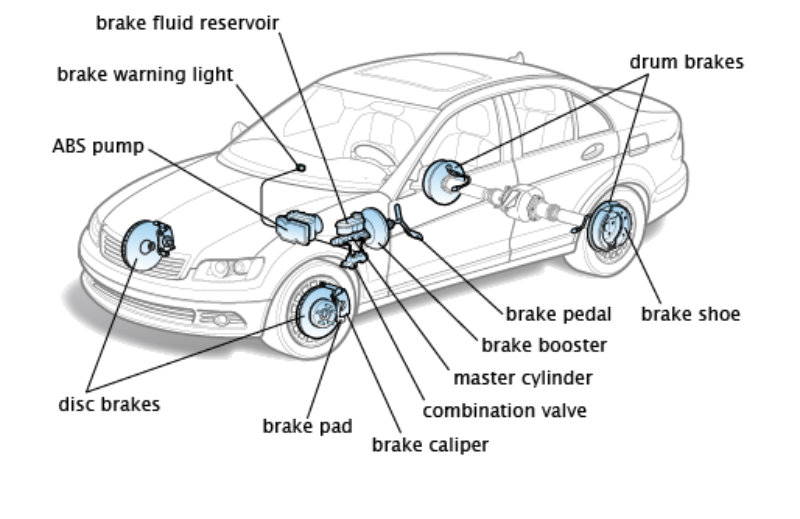
How the braking system works:
When the driver presses the brake pedal, it sends a signal to the brake master cylinder. The master cylinder squeezes hydraulic fluid, which travels through the brake lines to the slave cylinders. The sub-cylinders apply brake pressure, which slows the rotation of the wheels.
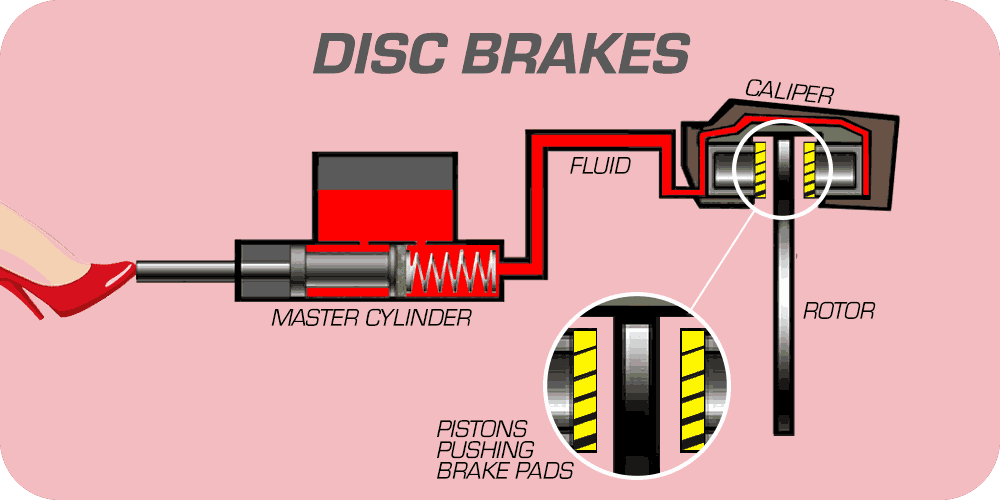

Types of brakes:
There are two main types of brakes:
- Disc brakes: They consist of a metal disc that is pressed by pistons mounted on the cylinder.
- Drum brakes: They consist of a metal cylinder that is pressed by pistons mounted on the cylinder.

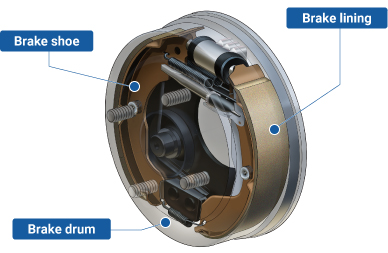
Disc brakes are most common on modern cars. They are more efficient than drum brakes and require less maintenance.
Preventive maintenance of the braking system:
The braking system should be checked periodically to ensure it is working properly. Braking system maintenance includes:
- Brake fluid change: Brake fluid must be changed every two years or 30,000 miles.
- Brake inspection: Brakes should be inspected for any wear or abnormalities.
- Lubricating the moving parts: The moving parts of the braking system must be lubricated to prevent wear.
- ABS System Check: The ABS system should be checked for any problems.
- EBD System Check: The EBD system should be checked for any problems.
Tips for safe driving:
- Use the brakes safely: Apply the brakes gradually to avoid skidding.
- Maintain a safe distance: Maintain a safe distance between your car and the car in front of you.
- Check your braking system regularly: Make sure your braking system is in good condition before driving.
Resources : https://www.nhtsa.gov/research-data/crash-avoidance/active-braking-technologies


